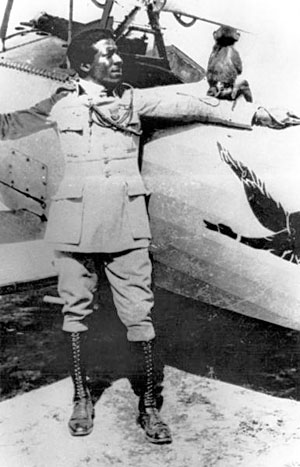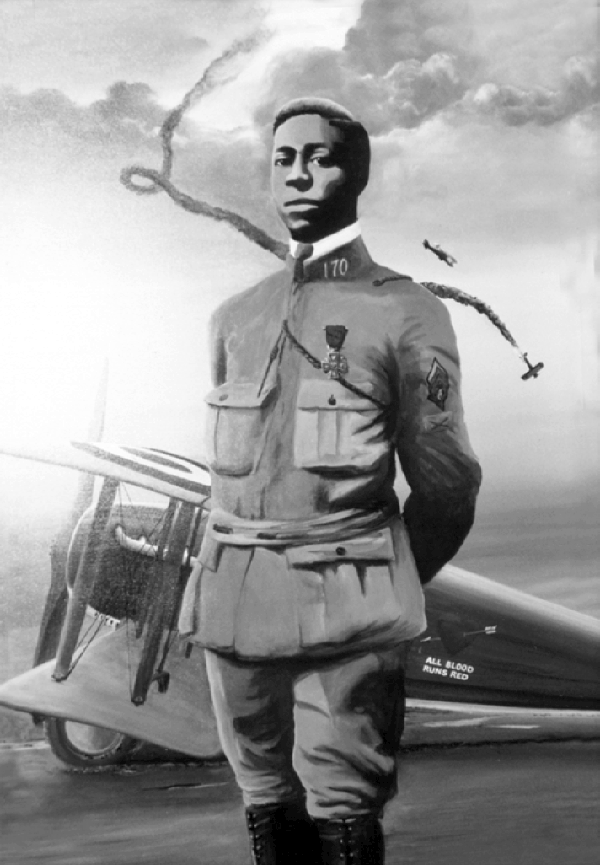An American in Paris
Today, an American in Paris. The University of Houston's College of Engineering presents this series about the machines that make our civilization run, and the people whose ingenuity created them.
Years ago, I did a program on Eugene Bullard, first Black pilot. Bullard managed to leave his hard life in early 20th-century Georgia, stow away on a merchant ship, take up boxing in Europe, then join the French Foreign Legion during the early days of WW-I. He was wounded near Verdun, and he won the Croix de Guerre.
When he recovered, he got into flying school, then became part of the Lafayette Escadrille. He flew twenty missions in a new SPAD fighter and shot down a couple of German planes. Then America joined the war and an American officer demanded he be removed -- since a Black pilot might hurt American morale.
Now I find Craig Lloyd's 2000 book, Eugene Bullard: Black Expatriate in Jazz-Age Paris -- largely about what happened next. And here a whole new Bullard emerges.
 This son of a former slave had proved to be a good friend to his ivy-league companions in the flying service. He was, after all, at least as intelligent, and possessed of unusual charm and verve to boot. During his years as a noted European prize fighter, he'd learned to speak both French and German. Within the military that gave him extra value as an interpreter. And it certainly served him very well afterward.
This son of a former slave had proved to be a good friend to his ivy-league companions in the flying service. He was, after all, at least as intelligent, and possessed of unusual charm and verve to boot. During his years as a noted European prize fighter, he'd learned to speak both French and German. Within the military that gave him extra value as an interpreter. And it certainly served him very well afterward.
The Armistice found Bullard a war hero in France -- but just another Black man in American eyes. So he stayed in Paris and found an apartment in Montmartre. Paris had picked up the jazz craze well before the war, and Montmartre was now a jazz center.
Bullard's remarkable learning ability had made him first a prize fighter, then a combat pilot. Now he studied to become a jazz drummer. He was soon a major figure in that expatriate world -- a player, a booking agent, a physical trainer, and a club manager.
Eventually, he managed the club, Le Grand Duc -- frequented by the likes of F. Scott Fitzgerald. He really knew them all -- Langston Hughes, Josephine Baker, Salvador Dali. He was a close friend of Arthur "Dooley" Wilson. We remember him as Sam, singing As Time Goes By in the movie Casablanca. Ernest Hemingway made Bullard into a character in his book, The Sun Also Rises.
Eventually, the NAZIs came. Bullard briefly rejoined the French army, was wounded once more, and finally fled through Spain back to America. There he finished his life as an elevator operator in Rockefeller Center.
Today, we see his portrait in the National Air and Space Museum. We say, "Isn't that wonderful" and move on to the next display. But to catch the magnitude of the person, we need to follow this remarkable, fully-researched book about Bullard's Paris years.
When author Lloyd takes Bullard out of his airplane and puts him in a society of equals, we see just how large this remarkable man really was. His few months as a pilot begin to look like a mere hiccup in a life lived far more fully than most of ours.
I'm John Lienhard at the University of Houston, where we're interested in the way inventive minds work.
C. Lloyd, Eugene Bullard, Black Expatriate in Jazz-Age Paris. (Athens, GA: University of Georgia Press, 2000).

A painting of Eugene Bullard with his SPAD VII. Note his personal motto on the fuselage: "All blood runs red" or, as he actually wrote it, Tout le Sang qui coule est rouge! Both images are courtesy of Wikipedia Commons.